Q
what tyre pressure for toyota hilux
The tire pressure of Toyota Hilux is generally 2.2 - 2.5 bar for the front wheels and 2.5 - 2.8 bar for the rear wheels. However, the exact tire pressure can vary depending on the vehicle load, driving conditions, and tire specifications. It is recommended that you refer to the label on the driver's side door frame or the vehicle user manual for the most accurate tire pressure values.
Special Disclaimer: This content is published by users and does not represent the views or position of PCauto.
Related Q&A
Q
What is the difference between 2.8 L and 3.0 L Hilux?
In Malaysia, there is no 3.0-liter variant of the Toyota Hilux; instead, the models available feature a 2.8-liter engine, such as the 2023 Hilux Double Cab 2.8 Rogue AT 4WD and the 2023 Toyota Hilux GR Sport 2.8 AT. Taking these two 2.8-liter variants as examples, they offer more powerful performance compared to the 2.4-liter models, with the 2.8-liter engine delivering a maximum power of 204 PS, while the 2.4-liter engine reaches a maximum power of 150 PS. Additionally, the 2.8-liter models provide a maximum torque of 500 N·m, compared to 400 N·m for the 2.4-liter variants.
In terms of features, some versions of the 2.8-liter models come equipped with more advanced active safety technologies, such as lane-keeping assist, lane departure warning systems, active braking/safety systems, and forward collision warning—some of which are not available on select 2.4-liter models. Furthermore, the 2.8-liter variants also offer enhanced comfort features, such as 8-way power-adjustable front seats and upgraded air conditioning systems in certain versions.
When it comes to pricing, the 2.8-liter models are priced higher, with the 2023 Hilux Double Cab 2.8 Rogue AT 4WD retailing for RM 158,880 and the 2023 Toyota Hilux GR Sport 2.8 AT costing RM 169,080, both of which exceed the prices of their 2.4-liter counterparts.
Q
Which is better, Hilux or D-Max?
Both the Toyota Hilux and Isuzu D-Max have their unique advantages, making it challenging to simply declare one as better than the other. The Hilux, a model under the Toyota brand, is renowned for its reliability and durability, with many owners reporting that its mechanical structure is stable enough to handle various complex and harsh road conditions. Its extensive maintenance network makes post-purchase upkeep convenient; in remote areas, finding parts and repair services is relatively easy. The price range for the Hilux varies from RM 89,100 to RM 169,080, with multiple powertrain configurations available.
On the other hand, the Isuzu D-Max shines in terms of ride comfort and interior quality. Its interior design places a strong emphasis on ergonomics, offering comfortable seating and a smooth driving experience. If you frequently navigate challenging terrains and prioritize the vehicle's durability and stability, the Hilux is an excellent choice. However, if you place a higher value on driving comfort and interior quality, the D-Max may be more suitable for your needs.
Q
What is the best engine of Hilux ?
The Toyota Hilux offers various engine options, each with its own characteristics, so the “best” choice ultimately depends on individual needs. The 2.4-liter diesel engine, such as that found in the 2023 Toyota Hilux Single Cab 2.4 MT 4WD, has a displacement of 2393 mL, delivering a maximum power of 150 PS, 110.3 kW, and a peak torque of 400 N·m. This variant is an excellent choice for users who prioritize fuel efficiency and everyday practicality, as it adequately meets the demands of daily commuting and general cargo transport on regular road conditions. Moreover, it is relatively affordable, with the Single Cab model priced at RM 103,880.
In contrast, the 2.8-liter turbocharged diesel engine provides a more robust performance, as seen in the 2023 Hilux Double Cab 2.8 Rogue AT 4WD. This engine boasts a displacement of 2755 mL, generating a maximum power of 204 PS, 150 kW, and a peak torque of 500 N·m. It handles complex terrains and heavy load requirements with ease, proving powerful strength in off-road situations or when towing heavy loads. Additionally, high-end versions equipped with this engine often come with more advanced features and luxurious interiors, but at a higher price point, such as the 2023 Toyota Hilux GR Sport 2.8 AT, which retails for RM 169,080.
If you frequently encounter challenging road conditions, have heavy loading needs, or seek a more powerful driving experience, the Hilux with the 2.8-liter engine would be a better choice. However, for those who primarily use the vehicle for everyday purposes, the 2.4-liter engine is more than sufficient and offers better value for money.
Q
What is the fuel range of a Toyota Hilux?
The range of the Toyota Hilux depends on several factors, including the specific model, driving conditions, and driving style. Generally, the Hilux has a fuel tank capacity of 80 liters. For instance, the official combined fuel consumption of the 2023 Hilux Double Cab 2.8 Rogue AT 4WD is 10.2 liters per 100 kilometers. Based on this fuel consumption and the 80-liter tank, the estimated range can be calculated as follows: 80 liters divided by 10.2 liters per 100 kilometers, which equals approximately 784 kilometers.
As another example, the official combined fuel consumption for the 2023 Toyota Hilux GR Sport 2.8 AT is 8.5 liters per 100 kilometers. Using the 80-liter tank, the range is roughly 80 divided by 8.5, resulting in approximately 941 kilometers. It is important to note that these are only estimates, and actual range may vary due to factors such as terrain, traffic conditions, and vehicle load.
Q
How many cylinders does a 3.0 Hilux have?
The commonly found 3.0-liter diesel version of the Toyota Hilux in the Malaysian market (model 1GD-FTV) features a 4-cylinder inline engine. Despite its larger displacement, Toyota has optimized the turbocharging (D-4D technology) and fuel injection system to ensure a balance between power output and fuel efficiency, delivering up to 204 horsepower and 500 Nm of torque. This engine is quite popular locally, particularly for commercial and off-road applications that require high load capacity or long-distance driving. Its durability and low maintenance costs are also key reasons why Malaysian consumers choose the Hilux.
It's important to note that, although it has a displacement of 3.0 liters, the four-cylinder design is lighter and more fuel-efficient compared to the older V6 engine, while also meeting modern emissions standards. For those seeking stronger performance, the Hilux's 2.8-liter version (also a 4-cylinder) is worth considering, as it has slightly different tuning but remains equally reliable. It is recommended to take a test drive to experience the low-end torque performance and consult with a dealer regarding regular maintenance to keep the engine in optimal condition.
Q
How much weight can the Toyota Hilux carry in its cargo bed?
The load capacity of the Toyota Hilux cargo bed can vary depending on the specific model, production year, and configuration. For instance, the Toyota Hilux Champ has a load capacity of 1,000 kilograms. Similarly, the standard Toyota Hilux sold in Malaysia is officially rated for the same 1,000-kilogram capacity.
It's important to note that exceeding the recommended load capacity can negatively impact the vehicle's handling, braking performance, and overall safety, as well as cause premature wear on components such as the suspension, tires, and brakes. Be sure to consult the vehicle's user manual or speak with a Toyota dealer to obtain the most accurate load capacity information for your specific vehicle.
Q
What is the fuel tank capacity of Hilux?
The Hilux features a fuel tank capacity of 80 liters. This relatively large tank allows for an extended range between refueling, benefiting all types of driving—whether it's for work purposes, such as reaching remote job sites, or for long road trips. With this 80-liter capacity, drivers enjoy greater flexibility and reduced frequency of visits to the gas station. It also instills confidence in drivers to travel longer distances without the constant worry of running out of fuel.
All models in the Hilux lineup come with this same fuel tank capacity, regardless of the specific configuration or engine option you choose.
Q
How many plugs does Hilux have?
In common models of the Toyota Hilux, such as the current 3.0L or 2.8L diesel versions, standard equipment typically includes one to two 12V power outlets (cigarette lighter sockets), with the exact number depending on the trim level. For instance, the base model may feature just one outlet located beneath the dashboard, while higher-spec versions, like the Hilux GR Sport, may add a second 12V outlet in the central console or rear seating area, facilitating the connection of in-car chargers, coolers, and other devices.
It’s worth noting that the latest generation of the Hilux has gradually introduced USB charging ports (Type A or Type C) to meet the power needs of modern electronic devices. However, traditional 12V outlets remain a vital feature for expanding equipment in commercial or outdoor settings, such as onboard air pumps and lighting systems. For those requiring additional power support, owners can consider aftermarket adapters or inverters (with due caution regarding circuit load safety), and it’s advisable to consult an authorized Toyota modification center to ensure compatibility.
Q
Is the Toyota Hilux powered by petrol or diesel?
The Toyota Hilux sold in Malaysia is powered by diesel. This fuel type offers several advantages that suit the Hilux's capabilities. Diesel engines generally provide higher torque at lower RPMs, which is beneficial for a vehicle like the Hilux, often used for tasks such as towing and off-road driving.
With diesel, the Hilux can handle heavy loads and challenging terrains more effectively. It also typically has better fuel efficiency compared to petrol engines in certain driving conditions, making it a practical choice for those who cover long distances or use the vehicle for work purposes. Moreover, diesel fuel is more readily available across Malaysia, ensuring convenient refueling for Hilux owners. This makes the diesel-powered Hilux a reliable and efficient option for Malaysian consumers who require a robust and versatile vehicle.
Q
What is the maintenance cost of Toyota Hilux?
The maintenance costs of the Toyota Hilux in Malaysia vary based on the model, usage, and service intervals, but overall, it falls within the affordable range. For common 2.4L or 2.8L diesel variants, routine maintenance is typically performed every 10,000 kilometers or 6 months (whichever comes first), with costs ranging from RM350 to RM600. This includes basic replacement items such as engine oil and filters.
For major service intervals, such as every 40,000 kilometers or every 2 years, which involve additional items like transmission fluid and brake fluid, costs can be around RM1,000 to RM1,500, depending on the specific inspection items involved. The Hilux’s durability and the lower dependency on imported parts (with some components produced locally) help keep long-term maintenance expenses manageable. However, maintenance related to key components such as the turbocharger or four-wheel drive system may incur slightly higher costs.
It is advisable to have regular maintenance performed at authorized Toyota service centers to ensure the validity of the factory warranty. Owners can also refer to Toyota Malaysia’s “Scheduled Service Guide” for more precise cost estimates. Additionally, performing simple tasks like replacing the air filter on your own can slightly reduce long-term expenses, but be sure to ensure that it does not affect the warranty terms.
Latest Q&A
Q
What is the best year for a BMW 5 Series?
For Malaysian consumers, the best year for the BMW 5 Series depends on specific needs and budgets. However, models after 2017 (the G30 generation) are generally regarded as the best all - round choice. This generation of the 5 Series strikes a great balance among handling, comfort, and technological features. The B48/B58 turbocharged engines it is equipped with perform excellently in terms of power and fuel economy, making it particularly suitable for Malaysian road conditions and driving habits. After the minor facelift in 2019, the iDrive 7.0 system and the digital cockpit were upgraded, active safety features were added, and the used - car prices are relatively reasonable.
It's worth mentioning that the hot climate in Malaysia poses a test to the electronic systems of European cars. It is recommended to choose a car within the original factory warranty period or a used car certified by PUSPAKOM, and pay special attention to the cooling system and the battery condition. If the budget is limited, the F10 generation from 2013 - 2016 is also a reliable option, but you need to check whether the timing chain problem of the N20 engine has been resolved.
No matter which year - model is selected, it is advisable to purchase through the BMW officially - certified used - car channel to get more comprehensive after - sales service support.
Q
How many litres is a BMW 5 Series?
The engine displacements of the BMW 5 Series vary depending on the model and year. Currently, on the Malaysian market, common petrol - powered models like the 520i are equipped with a 2.0 - liter turbocharged engine (1998cc), while the 530i uses a 3.0 - liter turbocharged engine (2998cc). The diesel model, such as the 520d, is also fitted with a 2.0 - liter turbocharged diesel engine. The hybrid version, like the 530e, combines a 2.0 - liter petrol engine with an electric motor.
Displacement directly affects a vehicle's power output and fuel economy. Generally speaking, the larger the displacement, the stronger the power, but the fuel consumption will also increase accordingly. As a luxury sedan, the BMW 5 Series balances performance and efficiency in its power tuning, making it suitable for both city driving and long - distance travel in Malaysia.
In addition, when choosing a model, you also need to consider the fuel quality and road conditions in Malaysia. BMW's turbocharging technology can adapt well to the local environment. It is recommended to take a test drive at an authorized dealer before purchasing to experience the actual driving feel.
Q
How to maintain a BMW 5 Series?
To maintain your BMW 5 Series properly, regular maintenance is the first step. It is recommended to change the engine oil and oil filter every 10,000 kilometers or 12 months to ensure the engine runs smoothly. Given the hot climate in Malaysia, it's advisable to use high-performance engine oil that meets the BMW LL-04 standard.
Regularly check the status of the coolant, brake fluid, and transmission fluid to prevent the fluids from deteriorating due to high temperatures. Tire maintenance is also crucial. Check the tire pressure monthly to make sure it meets the manufacturer's recommended values. And perform regular wheel alignments to extend tire life.
For the electronic systems, regularly upgrading the vehicle software can optimize performance. The BMW iDrive system can be updated through official dealers or Over - the - Air (OTA) updates.
Since the air - conditioning system is used frequently in Malaysia, clean the air - conditioning filter once a year to avoid unpleasant odors and the growth of bacteria.
In addition, the braking system of the BMW 5 Series needs regular inspection, especially the wear of the brake pads and brake discs, to ensure driving safety. When the vehicle is parked for an extended period, it's recommended to disconnect the negative terminal of the battery to prevent battery drainage.
As a luxury vehicle, the BMW 5 Series is best maintained with original or certified parts to ensure compatibility and durability.
Understanding these maintenance tips can not only extend the lifespan of your vehicle but also enhance your driving experience. BMW owners in Malaysia can also refer to the official BMW maintenance manual or consult an authorized service center for more personalized advice.
Q
Do BMW 5 Series last long?
As a luxury sedan, the BMW 5 Series generally performs well in terms of durability in the Malaysian market. Especially when regularly maintained, it can usually travel over 200,000 kilometers or even longer. BMW's inline-six engine and 8-speed automatic transmission have mature technologies and relatively high reliability. However, it should be noted that the electronic systems and turbocharger components of luxury cars may require more maintenance as the vehicle ages. In Malaysia's hot and humid climate, it is recommended to pay special attention to the maintenance of the cooling system and rubber parts, such as regularly replacing the coolant and checking the pipes. The chassis of the BMW 5 Series is made of solid materials, and its suspension system is well-designed, so it can still maintain a good driving experience after long-term use. Compared with models in the same class, its used car resale value is at an above-average level in the Malaysian market, indicating that consumers have a certain degree of recognition of its durability. To extend the lifespan of your beloved car, in addition to following the official maintenance plan, it is also crucial to use original parts and oil that meet the specifications. The road conditions and climate in Malaysia do pose some challenges to European cars, but as long as it is properly maintained, the BMW 5 Series can definitely become a reliable long-term companion.
Q
Why is the BMW 5 Series so heavy?
The weight of the BMW 5 Series is mainly related to its luxury positioning and safety features. As a high - end sedan, it uses a large amount of high - strength steel and aluminum alloy materials to enhance the body's rigidity. At the same time, it is equipped with a rich range of safety systems such as airbags and active braking, which all add to the weight.
In addition, to provide a comfortable driving and riding experience, the 5 Series is also equipped with luxury features like sound - insulating materials, electric seats, and high - end audio systems, further increasing the vehicle's weight. In Malaysia's hot climate, a powerful air - conditioning system is also an essential configuration.
Although the vehicle weight can affect fuel economy to some extent, BMW tries to balance this impact through efficient engines and lightweight design. For Malaysian consumers, the weight of the 5 Series actually reflects its high - quality and comprehensive performance. When buying a car, they can comprehensively consider their own needs. After all, luxury and safety are often the factors that high - end car owners value more.
View MoreRelated News

2026 Toyota Hilux Interior Unveiled, and It’s Giving Prado Vibes
JohnAug 6, 2025
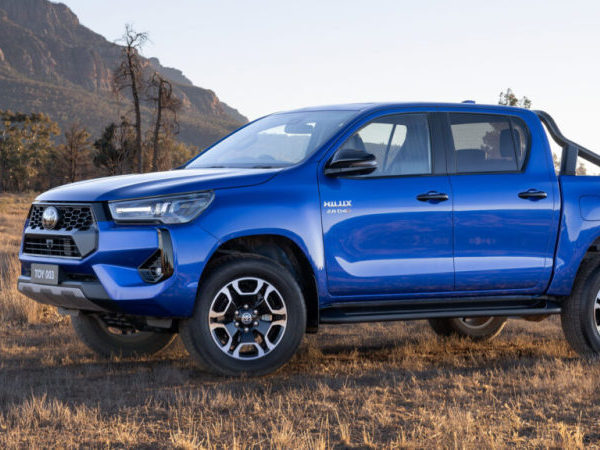
All-New 2025 Toyota Hilux Coming Soon: Here's What to Expect
JamesJun 24, 2025
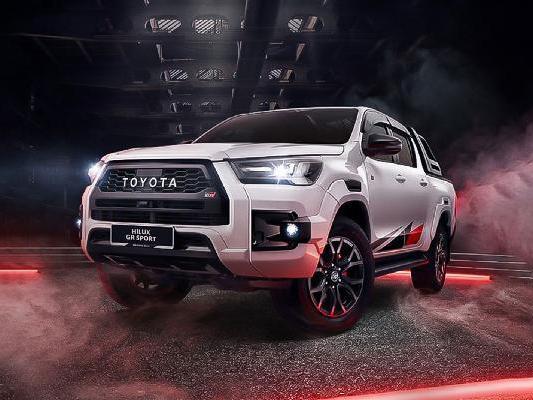
Toyota Hilux: A Buying Guide to Help You Choose the Right Model
MichaelMar 25, 2025
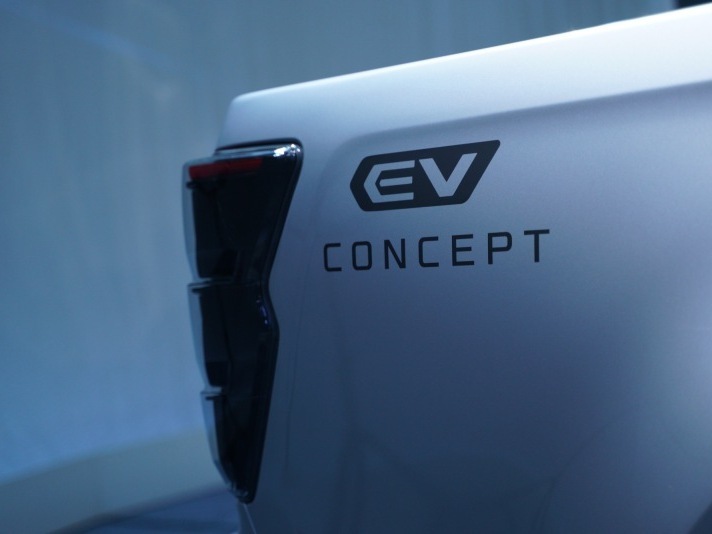
Reasons Why Pickups and SUVs Are Not Suitable for Electric Drive, Industry Secrets You Must Know Before Buying
JamesFeb 14, 2025
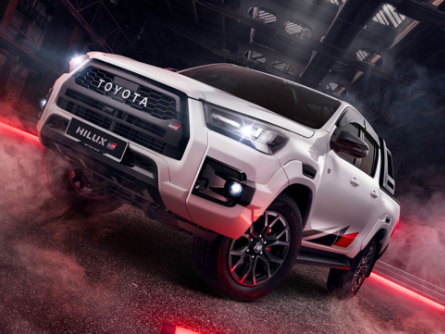
2023 Toyota Hilux GR Sport: Priced at RM 169,080
LienJul 4, 2024
View More



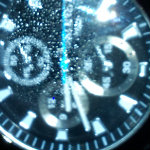



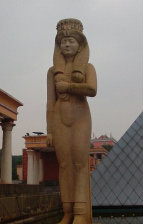

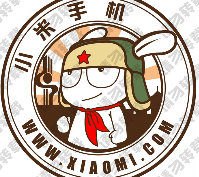
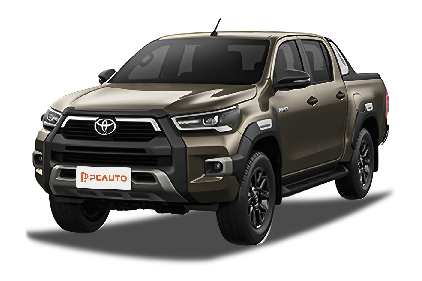





Pros
Cons